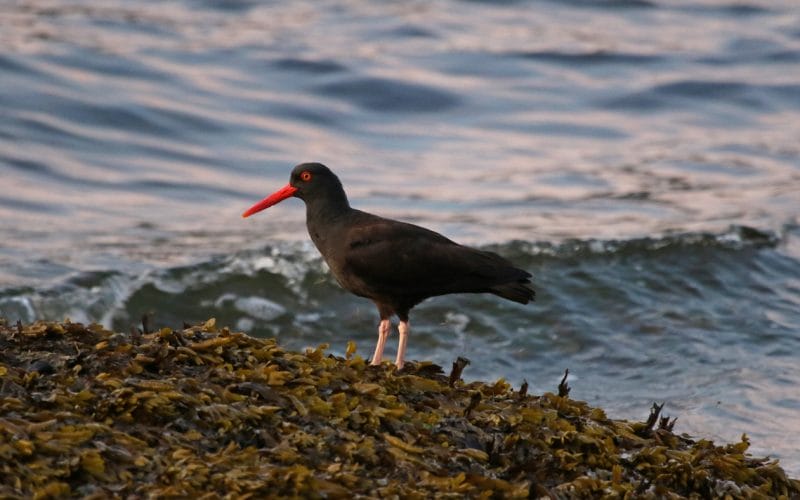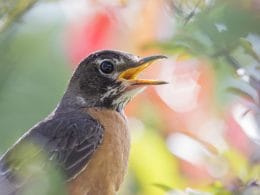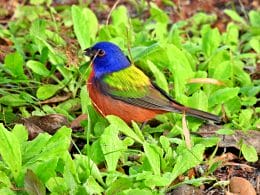If there was a competition for the most exciting type of birds out there, raptors are sure to win it by a landslide.
These powerful and (mostly) huge birds make for an extremely cool and easy bird-watching experience. Plus, if you’re lucky enough to witness them in action, your view on birds will never be the same.
The majestic and often intimidating figures of raptors make spotting them a fun activity for birding enthusiasts and beginners alike.
Luckily, Virginia has some of the greatest locations in the entirety of North America to spot birds of prey, especially during migration.
The Most Common Birds of Prey in Virginia
In this article, we’ll cover 17 birds of prey that can be seen in Virginia seasonally or year-round, and dive into the details of how they hunt, how to spot them, and more.
1. American Kestrel (Sparrow Hawk)

Weight: 2.8-5.8 oz
Wingspan: 20-24 in
Color: Tan back, blue-grey wings, large horizontal black streak on the tail
Let’s kick this list off with the smallest bird of prey on the continent, the misleadingly adorable American Kestrel. This little blue and red falcon preys on insects, small mammals, and small birds like sparrows, giving it its more popular name.
While it’s ferocious and agile, sparrow hawks get a taste of their own medicine as they fall prey to both raptors and other predators such as snakes.
Top Tip: Females tend to have less blue-grey in them, and both sexes have black vertical bars under and behind their eyes.
2. Bald Eagle
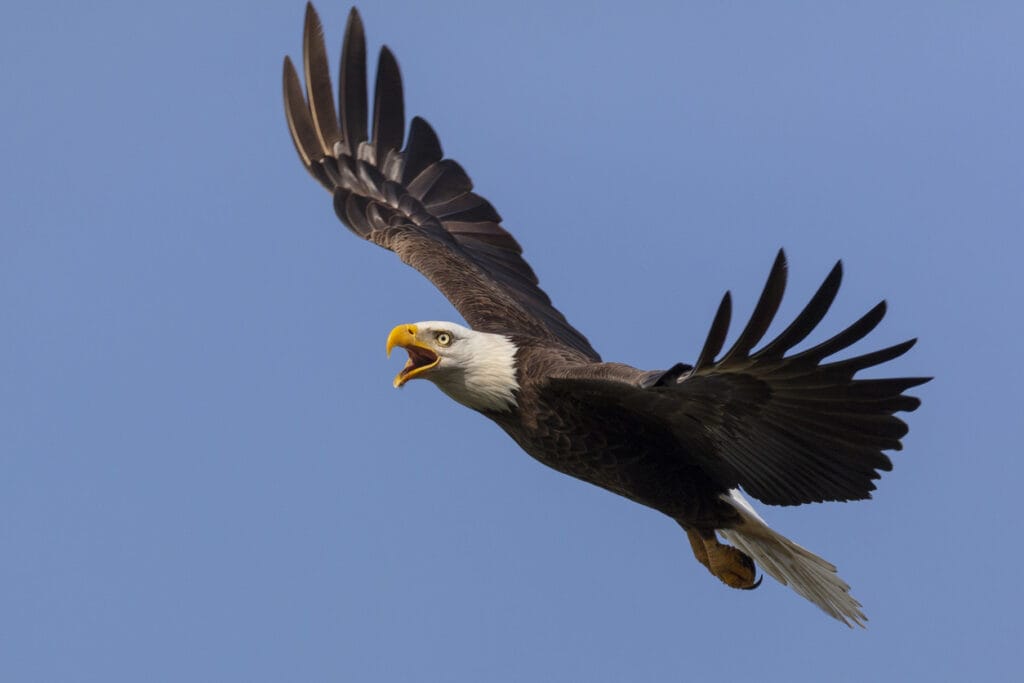
Weight: 6.5-15 lbs
Wingspan: 71-91 in
Color: White tails and heads with dark brown bodies
Yes, you can spot the most iconic eagle on the continent in Virginia! Since they’re more into fishing than hunting, you’re likely to see bald eagles near bodies of water. They do, however, hunt small shorebirds and mammals when available, and aren’t above nibbling on some roadkill either.
These birds are easily the most impressive on the list. These gorgeous creatures can have vision 5-8 times better than humans and they’re able to see ultraviolet light. Naturally, this means that their preferred method of hunting is soaring from incredible heights and stalking their prey till they dive at 100mph.
Bald eagles are not actually bald. The origin of this name comes from the Old English word “piebald,” which means white patch, signifying its white head. What most people don’t know about bald eagles is that they don’t look at all like this for the first five years of their lives.
Juvenile bald eagles have dark brown bills, feet, and plumage with varying degrees of brown. It’s incredibly difficult to identify them at that stage of their lives.

Another thing that comes as a huge surprise is the bald eagles’ calls. Unlike what most movies would have you believe, they sound more like seagulls than what you’d expect an eagle to sound like. If you’ve heard a strong, long caw in a movie, chances are it belonged to Red-tailed Hawks.
3. Black Vulture
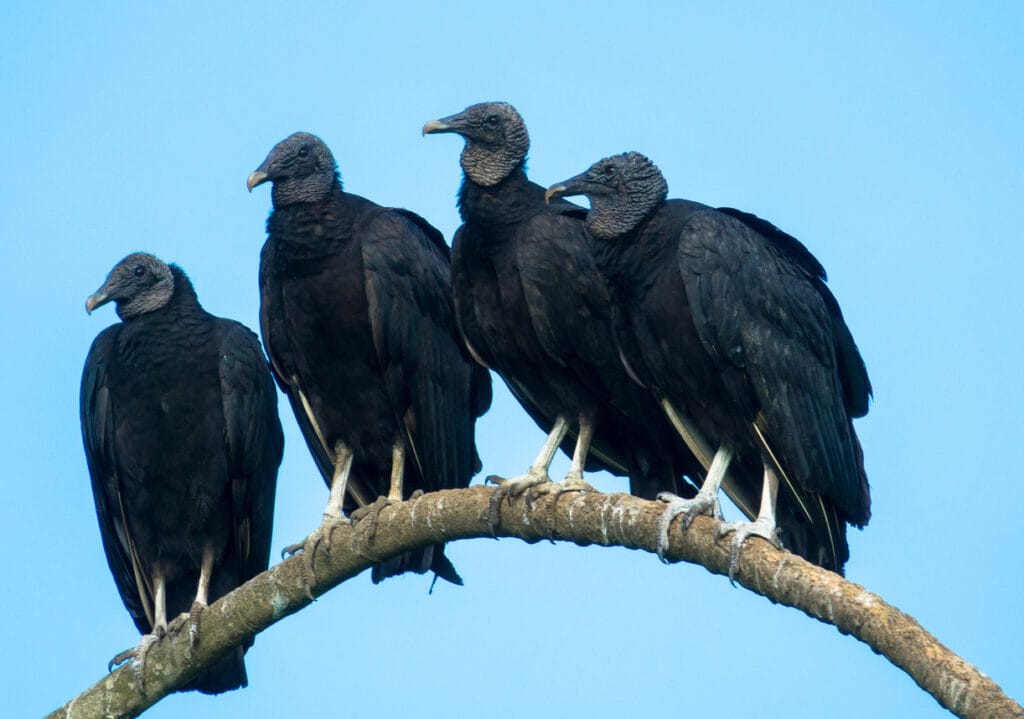
Weight: 3.5-6.5 lbs
Wingspan: 51-66 in
Color: Completely black plumage and skin, with occasional lighter underwings
Black Vultures have the characteristic bald black head, with plumage that’s almost entirely black. Surprisingly, one great way to differentiate between black vultures and turkey cultures is their behavior.
These vultures are more out there on all accounts; they don’t mind being around humans as much as turkey vultures do, they’re more aggressive in their feeding, and they could even secure their own prey!
Author Note: Yep, Black Vultures, despite relying on carrion for sustenance, don’t mind hunting small, infant animals or eggs.
That said, their chicken-like feet don’t do them much good if their prey of choice had any fight in them.
4. Broad-Winged Hawk

Weight: 16 oz
Wingspan: 33 in
Color: Dark brown or mottled brown
These birds only spend their breeding season in Virginia and otherwise live in South America, traveling over 4,000 miles back and forth yearly.
This migration makes for one of the most stunning views you can see while birdwatching.
5. Great Horned Owl
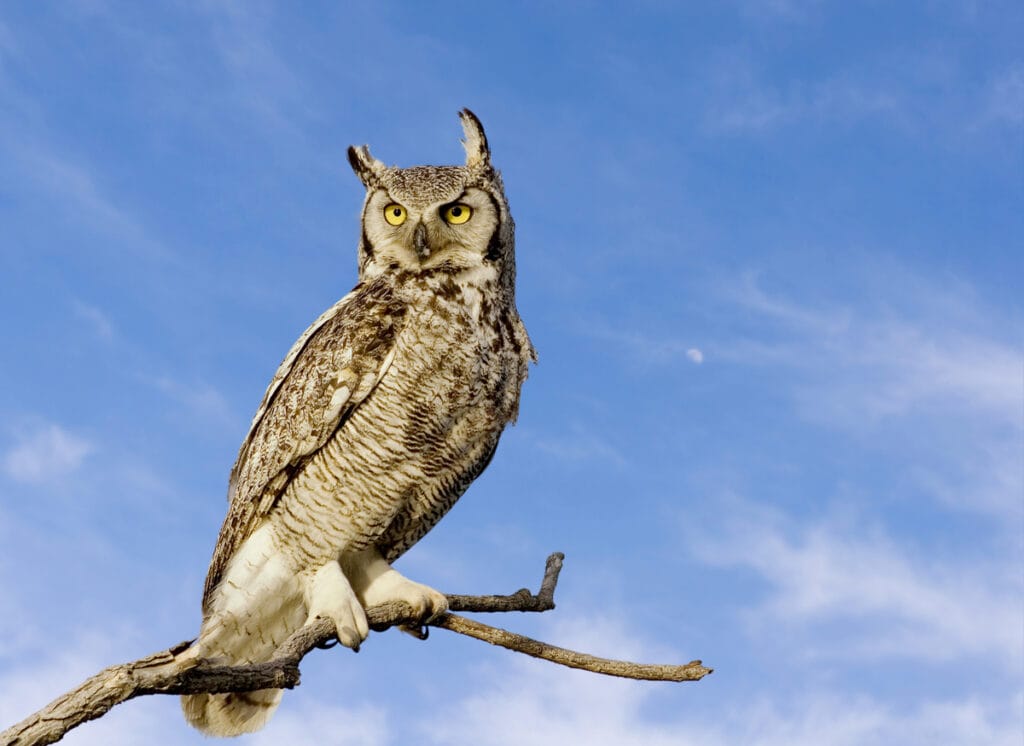
Weight: 32.1-88.2 oz
Wingspan: 39.8-57.1 in
Color: Mottled brown, reddish-brown face disk, white neck patch
While these huge owls are most known for their strange ear-like feathers, their hunting abilities are far more impressive.
Not only do great horned owls prey on animals their size or even larger, but these beasts will also target other birds of prey such as ospreys and peregrines.
6. Northern Goshawk
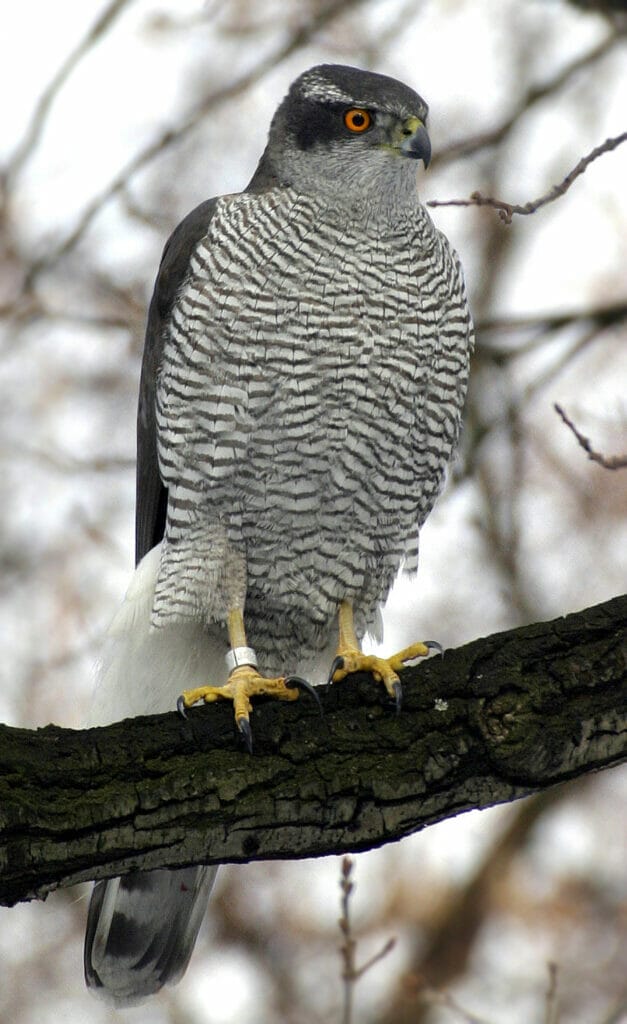
Weight: 22.3-48.1 oz
Wingspan: 40.5-46.1 in
Color: Grey backs and wings with white undersides and fine grey bars
These breathtaking creatures are not a common sight in Virginia, but if you’re lucky enough to spot one, it’s sure to be an unforgettable moment.
Northern goshawks have beautiful slate-grey backs and white bellies with grey bars. One distinctive feature they have is their white eyebrows and dark grey streaks behind the eye.
7. Northern Harrier
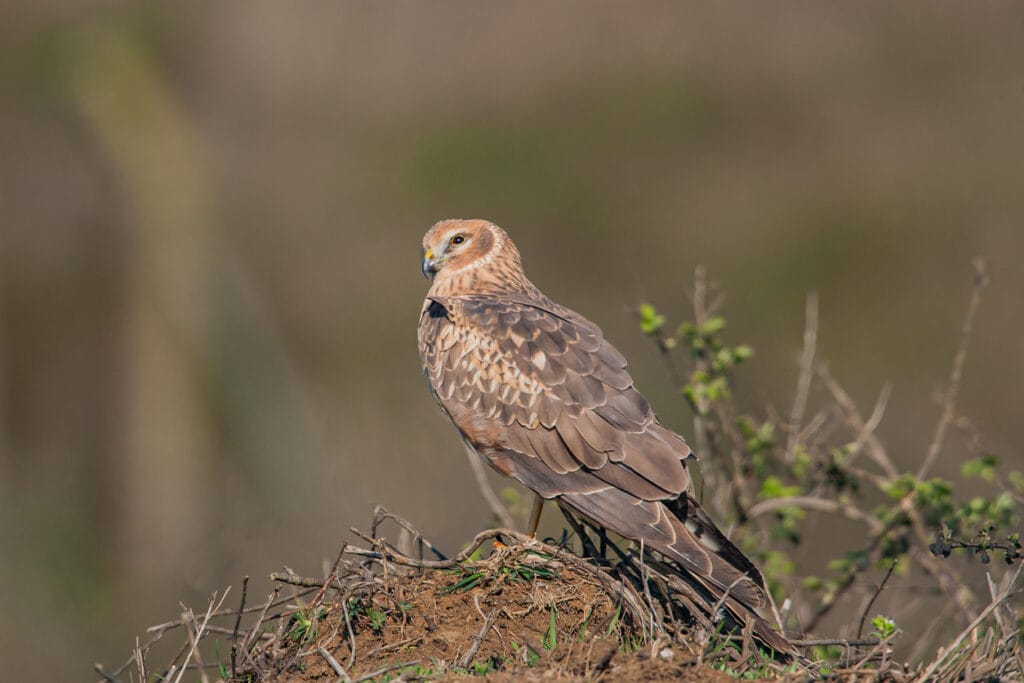
Weight: 10.6-26.5 oz
Wingspan: 40.2-46.5 in
Color: Brownish grey backs, wings, and tails, with white undersides and tufts at the base of the tail
These remarkable raptors have a distinctive owl-hawk shape with noticeable face disks made from stiff feathers. This aids their hearing, which they depend on along with their strong vision to catch their prey.
They nest on the ground and prefer to live in grasslands, making them fairly easy to spot. Northern harriers can be seen in Virginia during the winter.
Top Tip: The easiest way to identify a Northern Harrier is through their round-ish face and brown tail with a white base.
8. Northern Saw-Whet Owl
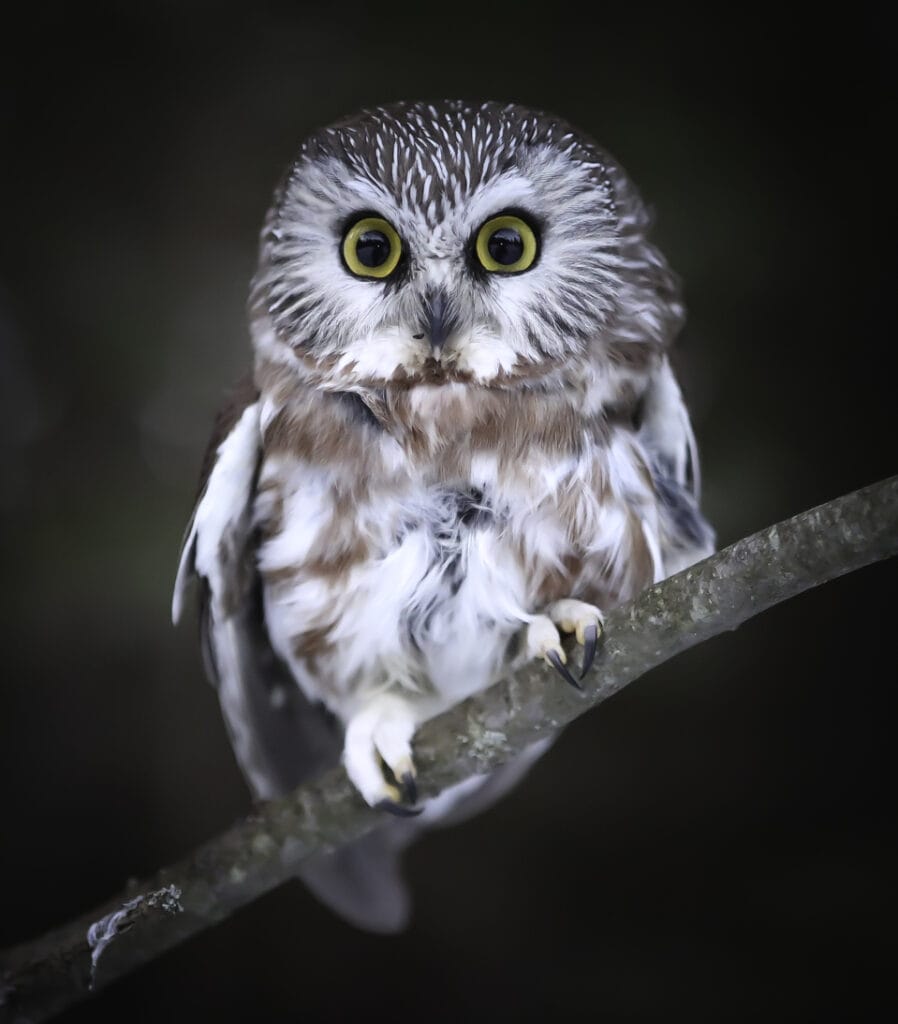
Weight: 2.3-5.3 oz
Wingspan: 16.5-18.9 in
Color: Mottled brown, pale facial disk with white and brown spots
This winter visitor is possibly the cutest owl you’ll see in Virginia and on this list. The tiny yellow-eyes owl is pretty hard to see since they stay hidden till late at night.
Juvenile saw-whet owls have whole brown bodies and cream-yellow chests, with a white V-shape on their face.
They were named after the sound made when sharpening or “whetting” a saw which they make when threatened.
9. Osprey

Weight: 3-4.4 lbs
Wingspan: 59-71 inches
Color: Brown back and wings, white underpart, white head with a brown line behind eyes
Ospreys are special in more ways than one, with a huge wingspan, their unique diet of freshly caught fish, and the fact that they have their own family in terms of taxonomy.
Author Note: It’s hard to misidentify Ospreys, with their uniquely-shaped heads and slender bodies.
10. Peregrine Falcon

Weight: 12-53 oz
Wingspan: 29-47 inches
Color: Blue-grey plumage and white underside with brown bars and black sideburns
Peregrines are a favorite sight among city dwellers, given their love to nest on tall buildings such as skyscrapers and water towers.
They have a distinctive blue-grey plumage with barred white chest and underwings. Another defining feature is their black sideburns.
Unlike most birds on this list, juvenile peregrines have the same colors as adults with less white in them. Overall, they have a very similar look to sharp-shinned hawks, only multiples in size.
11. Red-Tailed Hawk

Weight: 1.5-3.5 lbs
Wingspan: 43-55 inches
Color: Plumage can be anything from almost black to almost white
Red-tailed Hawks can be seen in Virginia all year round and are fairly easy to spot. To ID this medium-size hawk, it’s best to look for the brownish-red tail and the iconic call.
This steam-kettle-meets-a-crow call is the one most often used in movies for all sorts of raptors. It’s also pretty easy to hear out in the wild, given that it lasts anywhere between 1-3 seconds and is surprisingly loud.
This incredible hawk often has white under-feathers with dark brown edges, a white throat, and a brown head. However, these colors do vary widely.
The color of their plumage can be anything from almost black to almost white and every tan and brown shade in between, making it very difficult to identify it by color alone.
12. Red-Shouldered Hawk

Weight: 1.1-1.9 lbs
Wingspan: 38-42 inches
Color: Steel-grey wings, back, and head, with banded orange undersides and white feathers
This visually stunning hawk is easy to identify due to its banded black and white flight feathers, reddish-brown underparts, and characteristic red shoulders.
Red-shouldered Hawks reside mainly in forests and don’t go outside the canopy very often. Their two-tone calls are repetitive, high pitched, and particularly loud.
Author Note: They’re on the smaller side of hawks, with a wingspan of 38-42 inches and only 1-2 lbs in weight. They have quite long tails in relation to their small body.
13. Rough-Legged Buzzard

Weight: 25-49 oz
Wingspan: 52-54 in
Color: Dark or light brown plumage, pale underwings, black streak above the eyes
Another bird of prey that is only present in Virginia during the winter, the rough-legged hawk makes the Arctic tundra its home during the summer, hence the legs that are covered in feathers.
Rough-legged Hawks come in two morphs (color variations), which makes them considerably more difficult to identify for the inexperienced birder.
The one thing in common between the dark and light morphs, as well as male and female, is the black streak “eyeliner” starting from their eyes all the way to the side of their heads.
Dark morphs have entirely dark brown bodies with white or pale underwings, while light morph Rough-legged Hawks have visible white inner feathers all over their bodies.
14. Sharp-Shinned Hawk

Weight: 3-8 oz
Wingspan: 16.5-26.5 in
Color: Blue-grey plumage, reddish-brown bars on the underside, dark horizontal lines on the tail
These hawks are one of the smallest raptors on this list and in the continent, too. Being mostly ambush hunters, they’re quite secretive and are normally hard to spot.
You’re most likely going to see a sharp-shinned hawk during migration periods or if you live near a forested area and have bird feeders.
Sharp-shinned Hawks weigh only 3-8 ounces and have a wingspan of 16.5-25 inches. Like most raptors this size, its calls are shrill, short, and repeating. They have a long tail that, along with their steel grey backs and wings, will help you identify them easily.
15. Short-Eared Owl

Weight: 7.3-16.8 oz
Wingspan: 33.5-40.5 in
Color: Mottled brown feathers, black eye patches, round white face
The plumage on these owls varies greatly. You’ll see medium to dark shades of brown, different streaks of brown or black, and sometimes horizontally barred flight feathers.
Short-eared Owls are easy to spot, given that they like to hunt around dusk and prefer open meadows and flat vegetation.
16. Snowy Owl
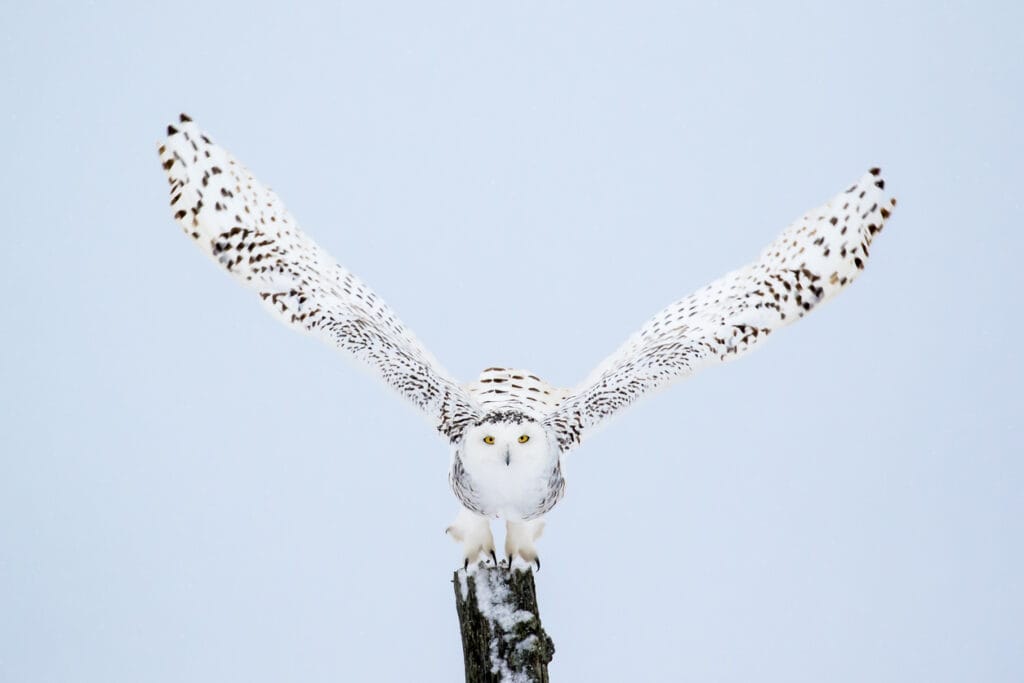
Weight: 56.4-104.1 oz
Wingspan: 49.6-57.1 in
Color: (Male) completely white, (female) white with brown tipped feathers
Like the Northern Goshawk, these owls keep closer to the Arctic tundra and are not likely to be seen in Virginia, but there have been irruptive migrations to our part of the continent.
This incredible creature is popular among birders and muggles alike, since the famous Harry Potter owl, Hedwig, belongs to this species. This all-white majestic bird was a male, as are all the completely white Snowy Owls.
17. Turkey Vulture
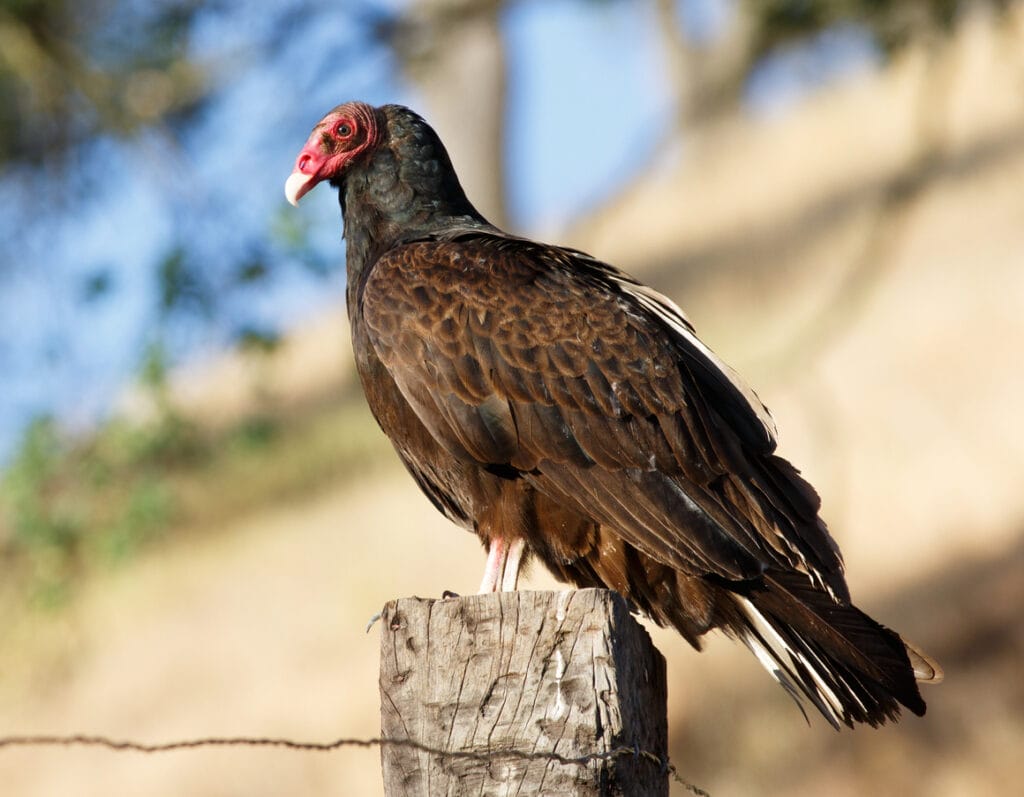
Weight: 70.5 oz
Wingspan: 66.9-70.1 in
Color: Brownish black feathers, brown flight feathers, red skin
This vulture is named after wild turkeys for its red featherless head and brownish-black feathers, but you’re not going to mistake one for the other. These birds are extremely shy and will stay away from humans as much as possible.
They use their keen sense of smell to find fresh carrion, and rarely ever eat meat that’s been dead for over 24 hours. Their smell is so strong that other types of vultures follow this bird to find carcasses.
One of the easiest ways to tell if what you’re looking at is a vulture is their flapless flight. There are entire articles written about the unique flight of Turkey Vultures so we’ll try to keep it short.
Author Note: Turkey Vultures glide in an effortless manner, depending a lot more on thermodynamics than physical effort. They use their large wingspan-to-weight ratio to literally ride hot air as it moves upwards. This results in a very wobbly gliding style with barely any flapping at all.
Immature Turkey Vultures may not have developed the red skin yet which might throw you off, but if you pay attention to brown parts of its plumage, you won’t mix up Turkey Vultures with black vultures.
Final Thoughts
There you have it; the 17 most common birds of prey in Virginia. Each of the above-listed birds is unique in its own way.
You may not be able to spot them all, but you’ll definitely spot a few at the very least, so keep your birding binoculars handy!
FAQ
The Northern Cardinal is not only the state bird of Virginia, it is also the most commonly reported bird as well.
The Barred Owl is resident in Virginia and has a variety of calls, one of which sounds just like monkeys.
The Bald and Golden Eagles are both seen in Virginia. The Golden Eagle can be seen in the Appalachians.






